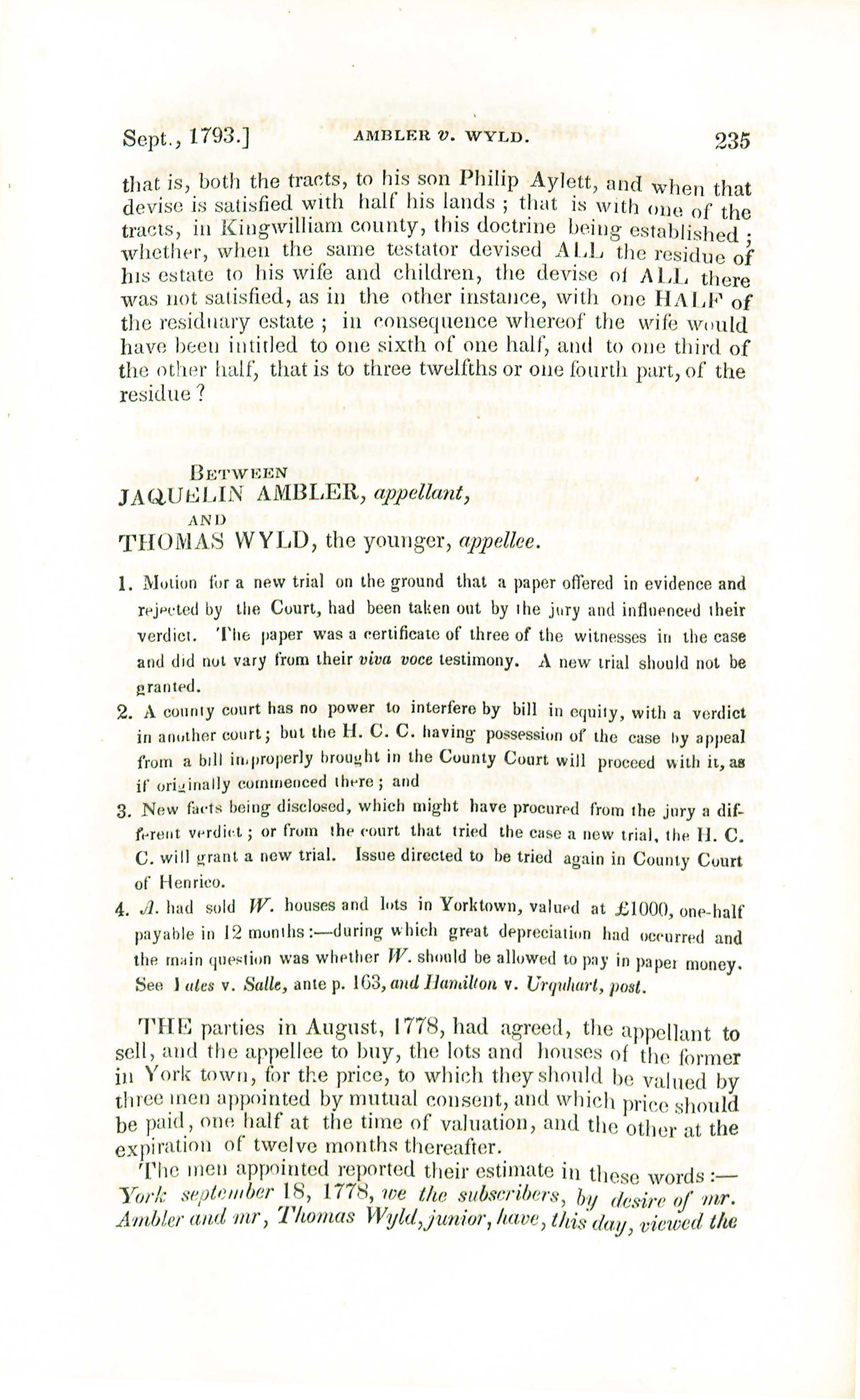Quesnel v. Woodlief

Quesnel v. Woodlief, 10 Va. (6 Call) 218 (1796),[1] was a land dispute where the Court determined whether a buyer could be relieved from a land sale advertised as 800 acres “more or less”, but was actually worth much less.
Background
Woodlief owned a tract of land called Sion Hill that was held by him and his ancestors for generations. In 1788, Woodlief put the land up for sale, advertising that it contained about 800 acres. Noel Quesnel, a French native and recent immigrant to Prince George County, decided to buy the property. The contract stipulated that Quesnel pay £3200 for the “more or less” 800 acres or Woodlief would conduct a survey where any excess land would be charged at £4 per acre. Noel declined the survey and bought the property only to find that land actually contained about 577 acres, and not 800. Noel sued Woodlief in the High Court of Chancery for fraud on the theory that Woodlief knew or should have known about the various liens and conveyances of the land.
The Court's Decision
Chancellor Wythe ordered a survey be taken of the property. The survey found that the land contained 608 acres, 1 rood (a quarter of an acre), and 13 perches. During a hearing, Chancellor Wythe dismissed the case. The Court of Appeals reversed and remanded for the purchase price to be adjusted to the true acreage of the property.
See also
References
- ↑ Daniel Call, Reports of Cases Argued and Decided in the Court of Appeals of Virginia,(Richmond: R. I. Smith, 1833), 6:218.